Please note: The Pressure Immobilisation method is recommended only for Funnel Web Spider bites and specifically recommended against for Red Back Spiders. Please see the treatment for Red Back bite below.
Also check out my other page on spider bite remedies for more information!
Table of Contents
General First Aid for Spider Bites
The old methods of treating bite and stings are now discouraged by the medical profession as often they only increase and spread pain. The pressure/immobilisation method is now widely used as a simple and effective way of slowing the spread of poison throughout the body. This method involves placing a firm but not tight, bandage along the entire limb that has been bitten or stung. This compresses the tissues, thus reducing the flow of venom along the limbs. Quite often the venom will be trapped exactly where it enters the body.
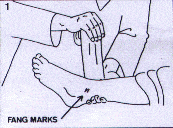
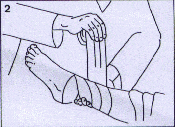
The patient should be kept calm and rested; all undue movement should be avoided. The pressure/immobilisation bandage should be applied. If the bite is on a limb, the bandage should start at the bite site, work down to the fingers or toes, then back to the armpit or groin.
If it is necessary to improvise for the bandages, strips of clothing or pantyhose could be used. A splint should then be applied to immobilise the limb. This is run along the affected limb, and bandaged to it, after the pressure bandages have been applied.
Medical aid should then be sought and it is better to send for an ambulance rather than attempt to transport the victim.
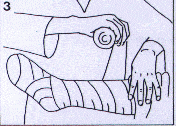
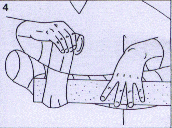
FUNNEL-WEB SPIDER FIRST AID
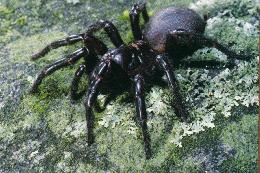
The Funnel-web Spider is the cause of much anxiety along the east coast of new South Wales. Many people still believe that a bite from this creature means death within minutes. This is quite wrong. Many people also believe that the larger female of the species is more deadly; in fact it is the male that is more dangerous. But as long as the pressure/immobilisation method is applied, in the same manner as for snake bite, the chances of death are very slight.
Unlike snake bites, the casualty usually feels great pain at the site of the bite. Nausea and abdominal pain follow. The casualty will also experience difficulty in breathing and a general weakness or numbness of the muscles.
The body also secretes heavily in several areas. Profuse sweating is usually obvious, along with excessive saliva production. Heavy coughing, producing secretions is common.
Now that all major hospitals in ‘funnel-web country’ carry an effective antivenin, there is little risk of death resulting from a bite. Once pressure/immobilisation method has been applied, medical aid should be sought immediately. A few days in hospital is the usual outcome with no lasting damage.
RED-BACK SPIDER BITE FIRST AID
As the venom of the Red Back Spider moves very slowly, any attempt to restrict its progress would only serve to increase the associated pain. No restrictive bandage should be applied. The fangs of this spider are quite small and its bite may often go unnoticed, but often a sharp pinprick may be felt. This is followed by pain at the site of the bite, leading to more general pain. Other symptoms include nausea, dizziness and partial loss of muscle control.
Sweating occurs in varying degrees, and is sometimes apparent around the site of the bite. Swelling of the affected area is common, as is a quickening of the heartbeat.
As with other bites, the victim should be kept calm and reassured. The only first aid recommended is to apply a cold compress to the wound, this may take the form of iced water in a plastic bag. The wound should under no circumstances be frozen. Where possible, take the spider to hospital for identification. Medical aid should be sought immediately. Most hospitals carry an effective antivenin for the Red Back Spider. Latest news is that the male Red Back has now hospitalised people after being bitten!!
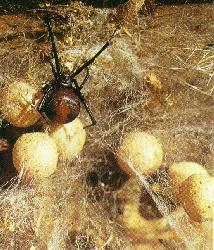
Information and pictures were taken from children’s projects and where credited to that child does not claim to be original information. Where possible, permission to reproduce has been sought. Any infringement of copyright is purely unintentional.
